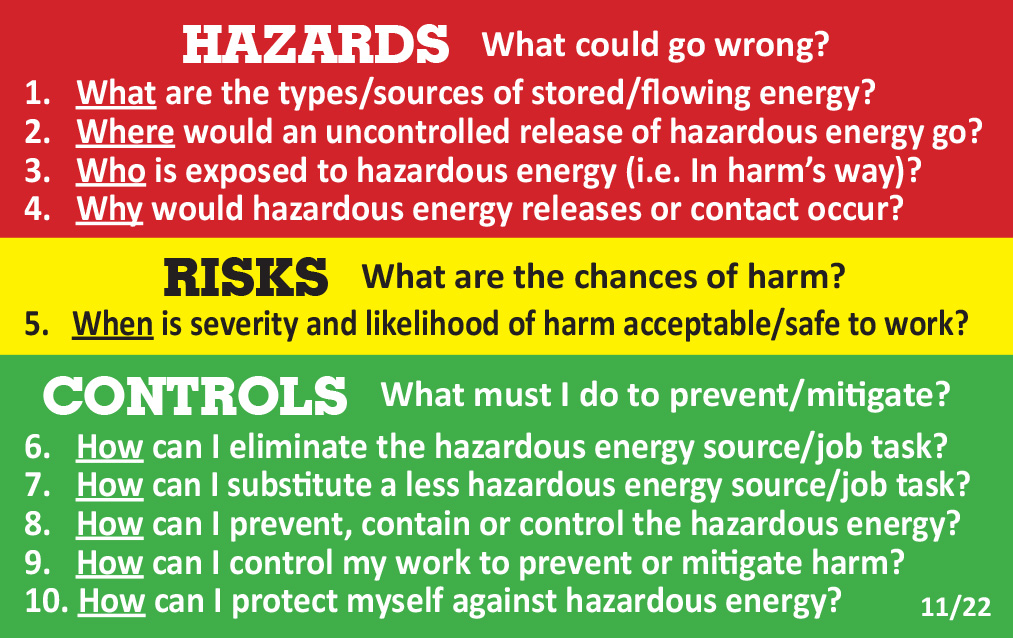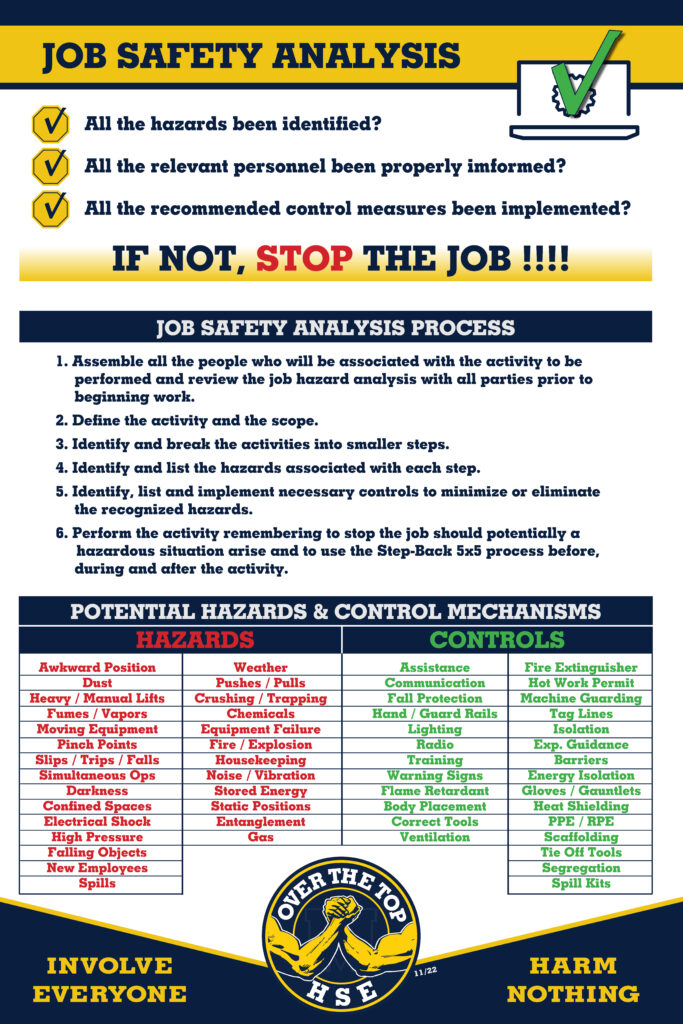CONTINUAL RISK ASSESSMENT
A Comprehensive Approach to Building Engagement and Developing a Robust Hazard Identification and Control Process

OTT-HSE's Continual Risk Assessment
Most organizations have a variety of tools in place to identify hazards, yet the quality and effectiveness of these tools is often lacking. Inadequate hazard identification often leads to incidents because organizations have not invested the time and effort to develop a robust hazard identification and control process.
OTT-HSE will help you focus on the synergies created by incorporating existing hazard identification tools (Job Safety Analysis, Behavior-Based Observations, Incident Investigations, Management of Change) into a continual risk assessment methodology that ultimately gets more people involved in the HSE process while promoting use of Stop Work Authority.
Identify Hazards Before, During and After Tasks
Continual Risk Assessment (CRA) is a personal tool that facilitates effective, individual involvement through hazard identification, both prior to performing a specific task and while performing the work. The benefits of CRA are that it allows for individual job planning, and helps to identify hazards before, after and during tasks.

Comprehensive CRA Training
OTT-HSE can deliver training on CRA to your employees, train-the-trainer classes or through interactive eLearning that can be customized to your organization’s needs. We also provide support materials to reinforce the concepts once training is finished in the form of pocket cards and posters that can be branded.


CRA Training Includes:
• Overview of the ten sources of hazardous energy
• The paths or spaces where people, property or the environment (if present) could be exposed to releases of, or contact with, hazardous energy. Also referred to as “Harm’s Way.”
• The circumstances in which people, property or the environment are exposed to releases of, or contact with, hazardous energy within the hazard zone and could be harmed (immediately or over of a period of time) if a hazardous event occurs. Also referred to as being “In Harm’s Way.”
• The events including one or more unplanned and unwanted occurrences (i.e. an event or chain of events), over a short or extended period of time, in which a hazard’s potential is realized as an incident, such that hazardous energy is released and/or is contacted and could result in harm to people, property or the environment (if in the hazard zone). Includes an “initiating event or cause” of the incident and the resulting consequences.
• Utilization of the hierarchy of risk controls from most effective to least effective (elimination, substitution, engineering, administrative, PPE)
